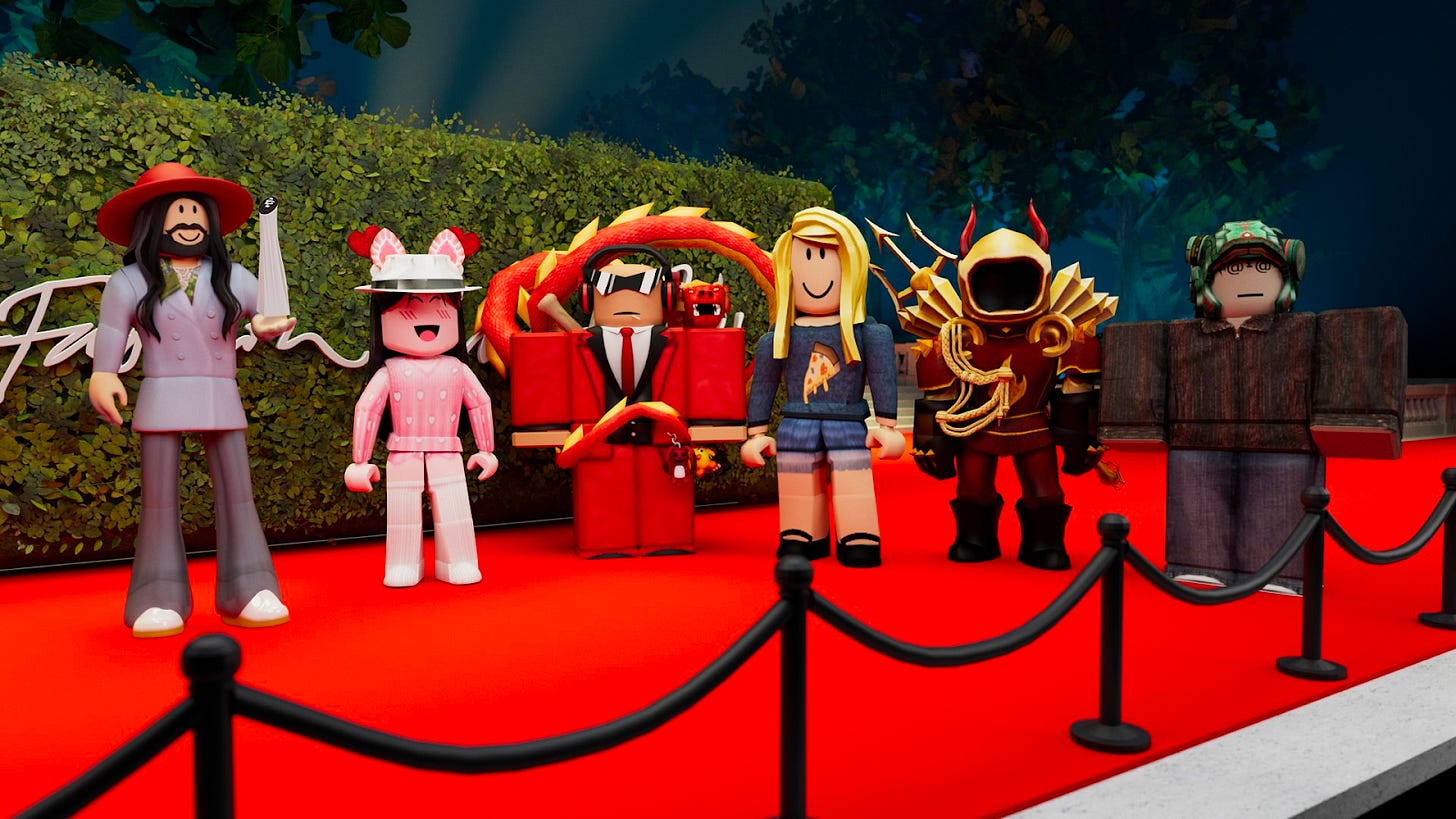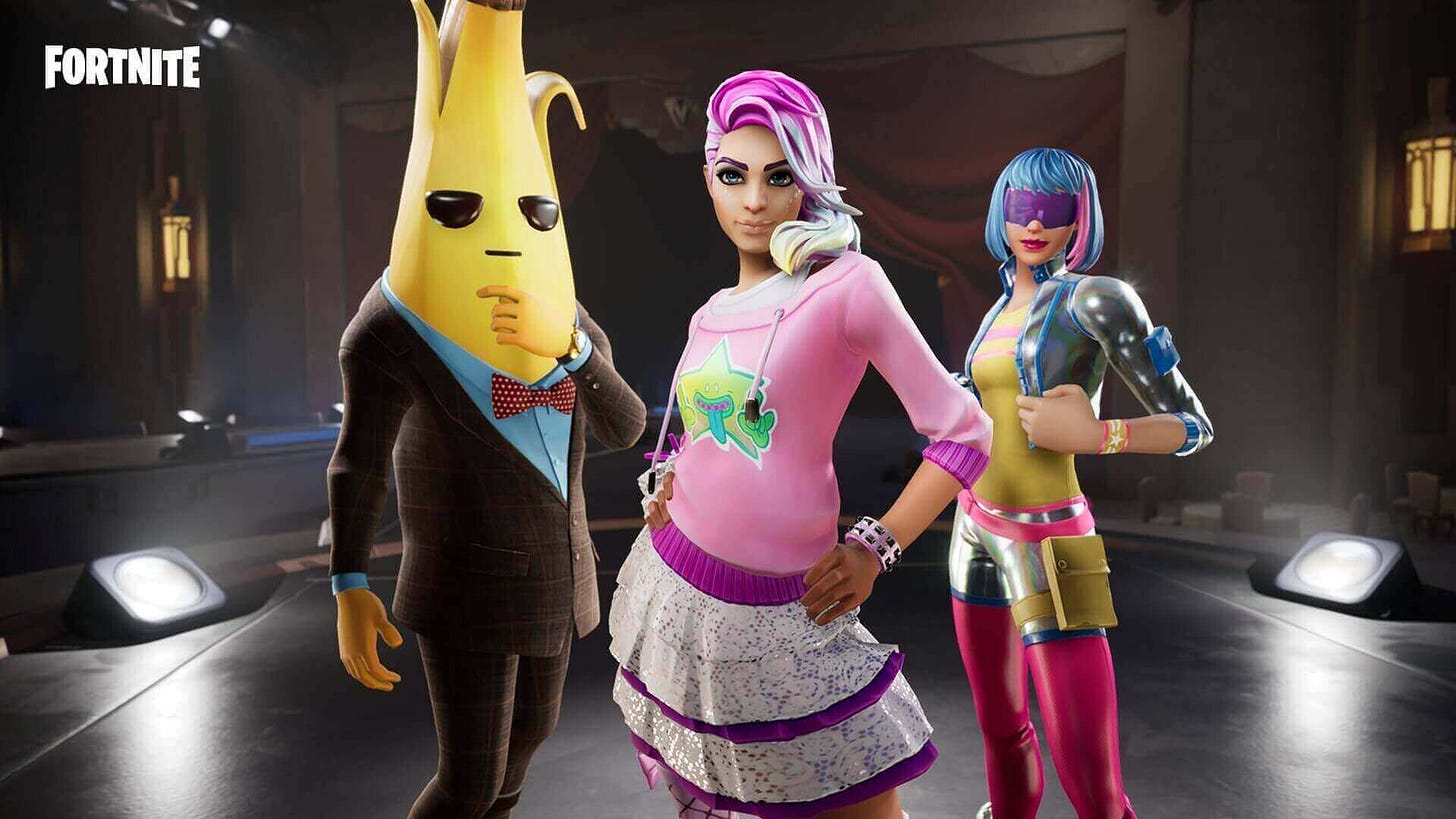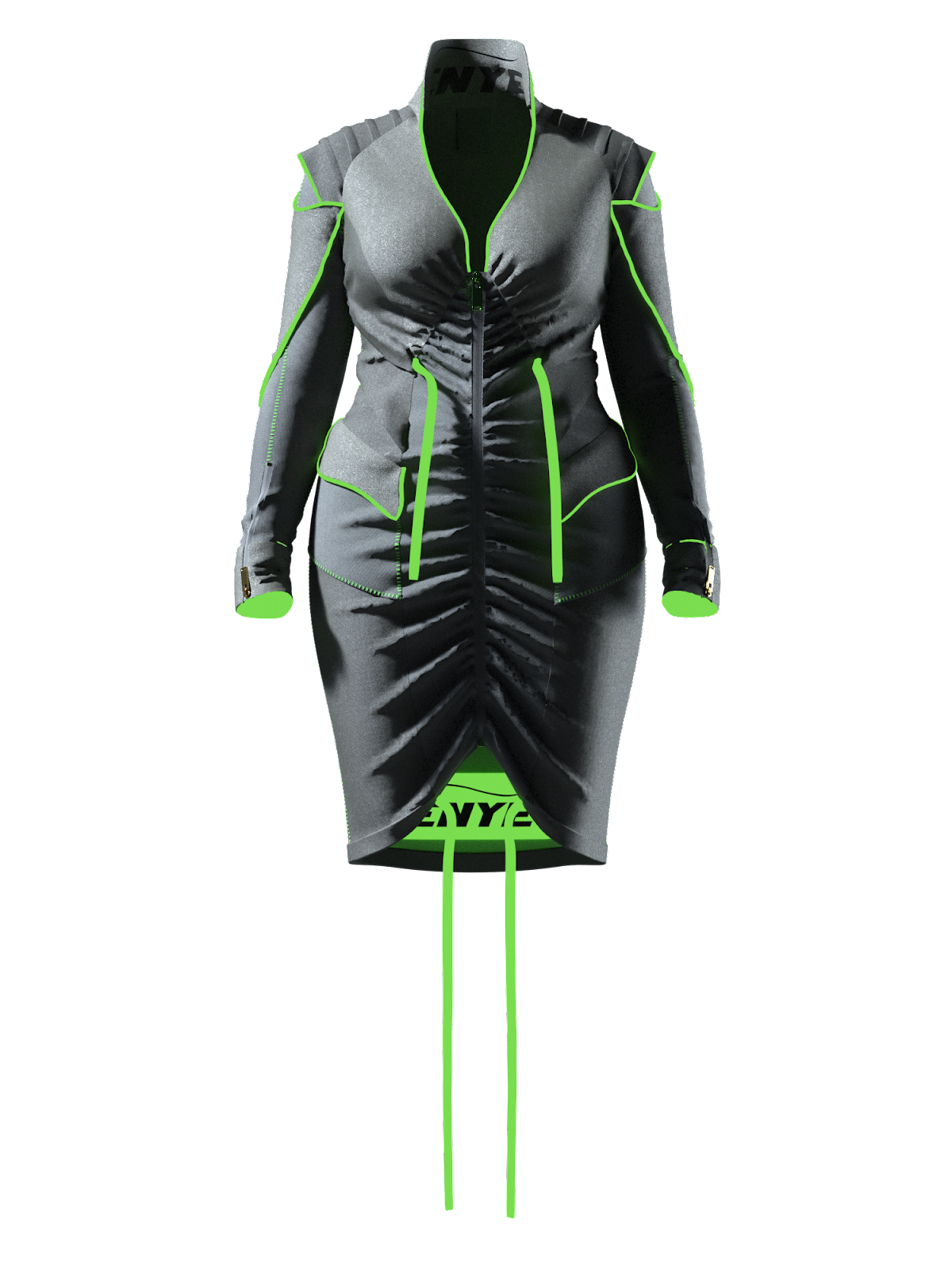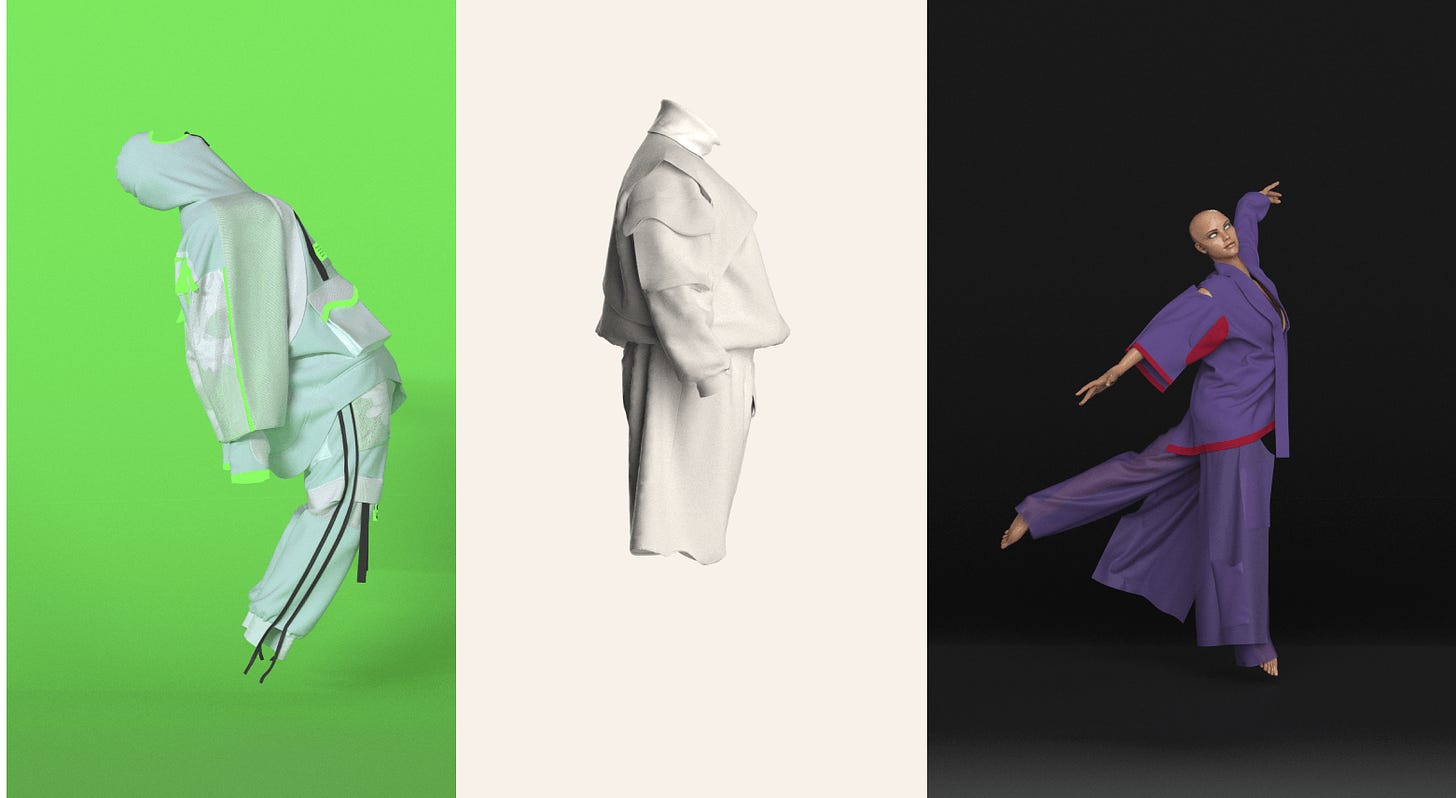Is Metaverse fashion without limits? Short answer - nope.
But that doesn't mean it's not a stunning, unique art form.
Metaverse fashion and the marketing machine behind it SEEMS limitless. In an ideal virtual world, anything is possible.
Metaverse fashion week (see my previous post here) obviously clarified some of the opportunities and limitations in digital fashion. But when I’m scrolling Instagram, I see a number of creatives expressing themselves magnificently via virtual clothes. There are some unique talents out there who have a mix of the creative and technological skills necessary to bring their dreams to “virtual” life. Watching these designers has been a source of inspiration as I’ve gone down this rabbit hole.
But I’ve wondered, how do you evaluate virtual fashion? Holding it to the same standards as IRL apparel seems silly, not least because of, you know, the lack of physical demands. But then, what standards should we hold digital fashion to? Where’s the Cathy Horyn of Web3 fashion?
Fashion has always been somewhere between art and commerce. While some designs are as stunning as Botticelli’s Venus, they still are tied to the demands of the human body, cultural conventions, and the weather. In some ways, the same is true of “metaverse” fashion, or at least it will be (let’s not quibble at this moment on the definition of metaverse, I use it to mean any 3d, persistent socialization space). The context always matters. Roblox looks different than Fortnite, which in turn looks different than Decentraland. There’s no correct “look,” but in each environment, there are aesthetics and use cases that work better than others.
Roblox v Fortnite
As those of you who've been with me for a while here know, I’ve always thought that one clear use case of virtual apparel would be very similar to that of physical apparel; an outward manifestation of your tribal identity. (see my previous blog here) Who are you? Who do you WANT to be? Clothes tell that story to those around you, and that fact won’t change in the metaverse. That makes the creations of talented digital designers even more intriguing, as one thinks about dressing their avatar for the different identities the different “metaverse” use cases require. And with that, I give you an interview with Nina Ibañez, Founder and CEO of ENYE. We talked (via email and DM) about her process, the art of digital fashion, and what she thinks the next trends are in the space.
I also had the pleasure of speaking at the PerformanceIN conference in NYC this week on Who Is Marketing to Whom in the Metaverse. The q&a discussion focused on the utility of NFTs and how brands will be able to use them to incentivize super fans and engage with new customers. The questions and interest from the crowd make me think there are at least two juicy newsletters to be derived from the topic. Stay tuned.
And now… Nina Ibanez, CEO of Enye
What’s the piece/creation you’re most proud of:
For the moment there is my design called “Combatir La Noche.” It means “fight the night.” The background of the design is the idea of an techy modern armor, that protects the owner of darkness and violence and provides the facility to hide insecurities behind a witchy look and a mask. It’s up on Artisant as my first official NFT. In the past, since I started creating digital fashion, there were a few pieces I love but recently I found out about me as a designer that I’d like to shift my design quality to transport emotions and trends with the goal to touch and move people.
Who or what inspires you?
I do celebrate Raf Simons for his style and Errolson Hugh for his funcional ways. Of course the work of Thakane Bazill (founder and CEO of label Takaii), The Fabricant and all these entrepreneurs with their upcoming NFT platforms are amazing. Who is not impressed by this unconventional entrepreneur style?
Where do you see digital fashion in 5 years?
I expect digital fashion/objects/ to grow further quickly. To not take place in the metaverse as a fashion brand will ruin the brand’s visibility, I think. Digital fashion will be established everywhere in the fabric and garment industry. Although it’s clear to me that digital fashion can’t replace physical garments, because of the fact that we need and like to dress and I still can’t imagine that the Industry someday will be able to actually digitalize haptics.
How did you get here? (education, background, etc)
My background is simply straight. As far as I can remember I wanted to become a Fashion Designer. Early in my childhood I started recycling the clothes I was supposed to wear as a kid. When friends in primary school explained their wishes to become a doctor or a firefighter, I always said I would become a fashion designer. Of course I didn’t have a clue about the marketing, physical or technology of the engine. At 15, as a balance to stormy times in puberty, I started sewing. At the age of 20 I graduated as a garment technology assistant and next year in 2023 I will do a bachelor‘s degree in design engineering of fashion.
What’s your advice for anyone wanting to become a digital fashion designer?
I mean the key for succeeding in fashion is to be interested in style, art and patterns. To succeed in digital fashion I think it’s important to be a fanatic in technology, Web3 and Industry4.0. Simply start with CLO3D, fall 10 times and stand up 11. Inspire others and get inspired and slowly and constantly leave footprints in the Industry
How long does an average piece take you? What technology and platforms do you use?
An artwork takes many days. The process consists of getting inspired, get an idea and understanding why it‘s worth it to be a transmission between thoughts and fashion, do the constructions, throw everything into the bin and start new sometimes. When the Frame is done there is much precision work and of course rendering time. I guess it takes around 7 days. CLO3D will stay forever. I am an Artist and am into Artistant and Replicant – These are my favorite platforms at the moment. I use Blender here and there. And I started to snuffle into Adobe Substance. There will be much more technology and tools to explore in the future.
What technological or platform innovations are you mostly looking forward to?
I think digital fashion will be a great option to trial and error for people who don’t have technical fashion training, to design and create something that serves oneself’s prestige. Within digital fashion everybody is able to create fashion without straining the physical supply chain with clothing that is made for the purpose of marketing only and then is dead stock soon. Then the trained designers and fashion workers can solve the problem of reducing the waste, the carbon footprint and to condense the product development caused by the textile and garment Industry.
What celebrity would you most like to see in one of your pieces?
Can’t decide – Everybody is welcome in ENYE. I am aiming for creating fashion that fits everybody and that supports the world of all of us by sustainable design and ideation. Everyone who wears ENYE provokes huge goosebumps in me.
Where can readers buy your pieces, if available?
ENYE is yet up on Artisant, soon up on The Frntal, Special-items.com, and a upcoming decentralised production system of Takaii launching this year. And I don’t know where digital fashion will lead me to, but I am very optimistic and hopeful that our future will be bright!
You can follow her work on Instagram here.





